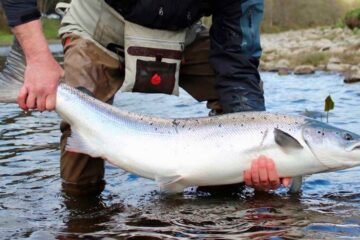The Scottish Government has published revised guidance for social workers and professionals conducting age assessments for unaccompanied asylum-seeking children, aiming to improve consistency, legal compliance, and support for vulnerable young people arriving in Scotland.
The 72-page document, released on July 22, 2025, replaces the 2018 version and marks the third update since the original framework was introduced in 2012. It reflects the growing number of spontaneous arrivals and incorporates recent legal developments, inter-agency responsibilities, and practical lessons from frontline work.
A Fresh Look at First Encounters
One of the most significant changes in the 2025 guidance is the complete rewrite of the section on initial presentation.
How a young person first arrives and interacts with services matters enormously. According to the new document, those first moments should never be used to make snap decisions about age. Instead, they should prompt careful, holistic follow-up assessments supported by professional judgment—not gut feelings or physical appearance alone.
The guidance doubles down on this point. “Age assessments must never be based solely on how someone looks,” it says.
One sentence here.
Instead, the initial encounter should serve as a starting point for a respectful and structured age assessment process that is compliant with Merton standards.

What’s New in the 2025 Revision?
The updated guidance includes a handful of major revisions and clarifications:
-
A fully revised section on initial presentation and early engagement
-
Updates on the role of the National Age Assessment Board (NAAB)
-
Clearer expectations around the role of a responsible adult during assessments
-
Refreshed guidance on gathering and verifying documentation
-
An updated Appendix 7 with case law relevant to age assessments
There’s also a renewed emphasis on trauma-informed practice and multi-agency collaboration. That means assessments should consider a young person’s background, mental state, and cultural context, not just observable behavior.
Age Isn’t a Science—It’s a Judgment
The guidance doesn’t shy away from saying what many practitioners already know: there is no scientific method that can accurately determine age.
Medical techniques like wrist X-rays or dental scans, often used in some countries, are riddled with wide error margins. That’s why the Scottish Government insists that social workers focus on what’s called a Merton-compliant assessment—a term that comes from the 2003 B v London Borough of Merton ruling.
Just one sentence here.
That means looking at everything: how the young person communicates, their history, their documentation (if any), and how they present over time—not just in a one-off interview.
What Makes a Good Age Assessment?
The guidance is packed with practical reminders for professionals. While it doesn’t have statutory power, it functions as a blueprint for best practice. Among the principles it reinforces:
-
Child-first approach: Everyone under 18 must be treated as a child under Scottish law (Section 40, Human Trafficking and Exploitation Act 2015).
-
Multi-agency working: Input from schools, carers, legal reps, and health workers is key.
-
Consistency with legal precedent: Social workers must be familiar with relevant UK and Scottish case law.
-
Ethical caution around medical evidence: Paediatric reports are valuable only when linked to the person’s health needs—not requested solely to assess age.
One-sentence paragraph here.
The guidance also explains the difference between a full medical assessment and a general observation or comment made by a healthcare worker involved in the child’s care.
Experts Urge Caution on Medical Testing
One particularly nuanced part of the guidance addresses the rising demand for medical involvement in age disputes.
While some politicians and members of the public may see X-rays and scans as objective solutions, the reality is far messier. Bone development varies widely due to genetics, nutrition, and trauma. The Scottish Government explicitly warns professionals not to over-rely on physiological tests.
“Medical information may play an important part in contributing to age assessments,” the document says, “but physiological assessments have wide margins of error… A medical report is different from general information or opinion.”
One-sentence paragraph here.
In other words, just because a paediatrician has seen the young person doesn’t mean their input should override social work judgment—or the young person’s own testimony.
Why This Matters Now
The need for clearer, fairer age assessments has never been more pressing.
Scotland, like the rest of the UK, has seen an uptick in spontaneous arrivals of unaccompanied asylum-seeking children—often from regions like Sudan, Eritrea, Afghanistan, and Syria. Many arrive with little or no documentation, and others have experienced trauma that makes them appear older or younger than they are.
Mistakes can have devastating consequences. If a child is wrongly assessed as an adult, they lose access to child protection, education, housing, and trauma-informed care. If an adult is wrongly assessed as a child, it can put vulnerable children at risk.
That’s why every step in this process matters.


















